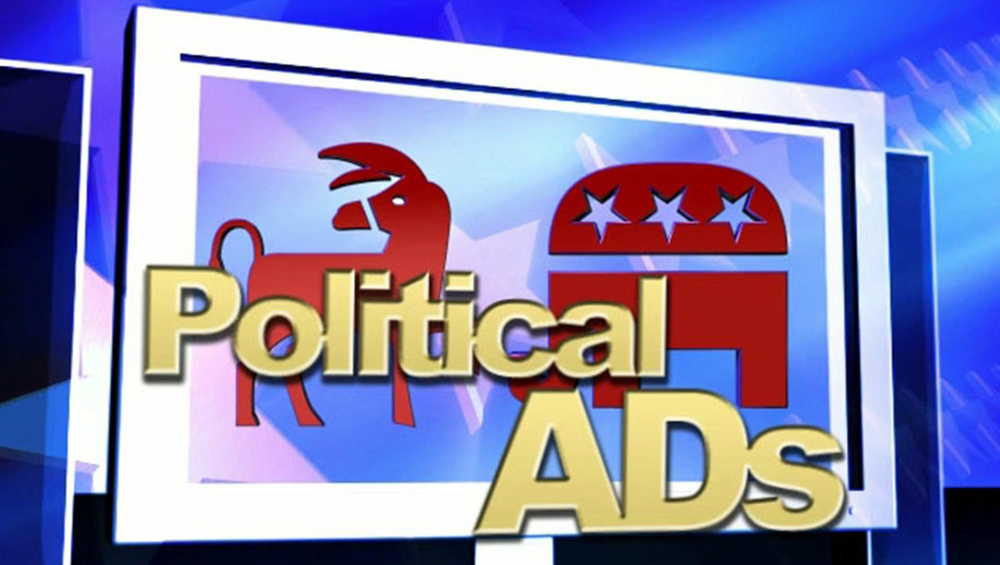
Kantar Predicts $6B In 2019-20 Political Ad Spend

The 2019-20 federal election cycle is forecast to generate $6 billion in political advertising, according to a study by Kantar.
Spending on traditional TV media will remain strong, with broadcast attracting $3.2 billion and cable attracting $1.2 billion. Radio ad spending is expected to total $400 million. Kantar’s estimates include spend only on ads sponsored by federal candidates or campaigns, and not by PACs.
Kantar projects that digital media will take in $1.2 billion, 20% of the total.
“Overall, an extended Democratic primary fight would likely be a short term, second quarter 2020 sugar high,” said Steve Passwaiter, general manager for the CMAG service at Kantar’s Media division. “In fact, a long primary and a Democratic convention fight would most likely reduce total campaign spending as it would reduce the amount of time the eventual Democratic nominee would have to raise and spend money for the general election.”
Additional Considerations For 2020
Kantar notes that based on past results, digital remains a wild card when it comes to media spend. In 2016, the Clinton campaign spent 2.5% of its total budget and 6% of its media budget on digital. The 2016 Sanders campaign spent 12.5% of its total budget and 25% of its media budget on digital. Meanwhile, the Trump campaign spent more than 40% of its ad budget on digital in 2016. With such varied strategies, it remains to be seen what will occur in 2020.
Another area of emerging focus in the 2020 election cycle is the over-the-top/connected TV space. The issues of scale that hindered the use of this platform in previous cycles is now in the past, as the universe has expanded beyond D2 and Comcast’s VOD service. Accordingly, political advertisers will be able to air more spots on these platforms and thus extend the reach of their messaging and better connect with younger audiences.
Passwaiter cautions a “wait and see” approach when it comes to Super PACs, which can also play a significant role in shaping advertising spend. “Not only do the unlimited ways they can raise money add to the overall total, but they pay a premium for television since they do not qualify for the lowest unit rates. It will be interesting to see if a Democrat uses them in 2020 as most in the primary have rejected this type of support so far,” he said.
Brand Advertisers Should Brace For Clutter
With political advertisers investing heavily on local TV particularly in battleground states, the result can be competition and clutter that crowds out brand advertising. Kantar’s analysis of the 2016 election cycle found that during the last three weeks of the campaign season, political advertising totaled 32% of local ad time within the battleground markets studied — an increase of 26% from the beginning of the season. Battleground markets analyzed included Florida, Indiana, Iowa, Missouri, North Carolina and Pennsylvania.
Meanwhile, non-political advertisers saw their share of spot TV inventory fall from 77% to 51% — a corresponding decline of 26%. Station promos were the one category that stayed steady at 17%.
The impact of political advertisers’ rising tide hit across all categories. Automotive, which was the highest-spending category, saw the deepest decline, falling to 9% of all ads during the weeks right before the election as compared to 14% at the start of peak political season. However, the telecom, education and medical services sectors saw steeper declines, with education advertising’s share by half to reach just 2%.
Local news was a particularly significant channel for political advertisers. During the final weeks of the election season, Kantar also found that political advertising took up 43% of available slots on local news in battleground markets, as compared to just 10% at the start of the season.
Brands seem to typically be responding to the huge influx of political advertising by reducing the number of spots they run rather than ceasing advertising altogether. Specifically, the number of brands advertising on local TV fell 11% from the beginning to the end of the campaign season, even as the number of ads those brands ran fell 26%.
“This trend indicates that advertisers are trying to at least maintain some presence for their brands during election season, although they are no longer able to run as many ads,” says Jon Swallen, chief research officer at Kantar’s Media division. “Stations may also be trying to make sure they do not shut out local advertisers even as the campaigns drag on.”




































Comments (0)